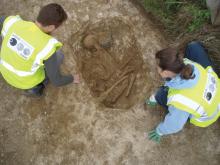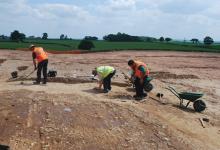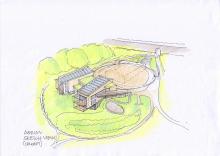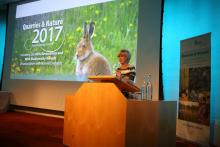
They came, they saw and they conquered. The Romans spent 400 years in Britain before leaving some 1,600 years ago, writes Patrick Smith.
But under a highly ambitious scheme they will be back as part of a wider project that will make full use of
Park in the Past is a Community Interest Company (CIC), which is a type of limited company designed for social enterprises that want to use their profits and assets for public good.
If all goes according to plan, the 49hectare site, through which runs the River Alyn, will eventually boast a fully functional Roman fort (its USP) and an Iron Age farmstead set within the original environment, along with educational and research facilities; a visitor centre; and an exhibition facility.
Rich in wildlife of all types, the site will also be a country park, and there are plans for passive water sports (no engine) on the 14.5hectare lake (said in parts to be over 30m deep), along with a restaurant and cafe, with the whole operation offering employment opportunities. A considerable amount of time and money has already been spent on wildlife surveys and ecological consultancy. Paul Harston, from nearby Caergwrle, has lived in the area all his life, and is a director of Park in the Past who, with his colleagues, is keen to see work start as soon as possible.
At present the proposals are with planning officials, and while not everyone is in agreement with the plans, Paul Harston says that a vast majority of people living near the site, and in adjoining villages, are. “This is a lifelong project, a legacy to be handed on to the next generation. As well as being recreational, it will also be educational, and we want as many people involved in its construction and its use,” he says of the site, which was acquired by the project by way of gift from Hanson, part of the Heidelberg Cement group.
Harston and the team see much of the construction work on site being carried out by volunteers, although funds are being raised through pledges; various events; and applications to benevolent organisations, including the UK Lottery Heritage Fund.
A key element required to open up the site is a new bridge over the River Alyn, although many of the original roads and tracks can still be used, including concrete paths around the site that previously supported the conveyors.
“The concept of this project has been around for 20 years or so, and our plans are ambitious but exciting. For example, we envisage building an earth house that will be 25m across, and which was capable of holding up to 250 people, while the proposed Roman fort will be some 90m² or 100m² with ditches,” says Harston.
Near the fort’s planned site a small test building has been built to investigate how the ramparts may have been constructed.
As with the other proposals, experts from outside the area have been consulted in a bid to make the structures as near the original as possible, but in the case of the ramparts something other than the established method was tried. Park in the Past is also a member of Netherlands-based EXARC (the International Council of Museums affiliated organisation) that represents archaeological open-air museums, experimental archaeology, ancient technology and interpretation.
“This gives us access to a huge amount of data whether it be about reconstruction or more about the past,” says Harston, who was among dozens of Park in the Past friends and supporters attending a special event at the former quarry site at the end of May.
One of the highlights was the test firing of a Roman ballista missile weapon, constructed by three men from Newcastle upon Tyne, northeast England.
The sign of things to come?
“We hope so. We have a lot of friends and supporters, and Hope and Caergwrle and the surrounding areas have rich histories. The idea of the Park in the Past is that it, and all that history, should be connected,” says Harston.











